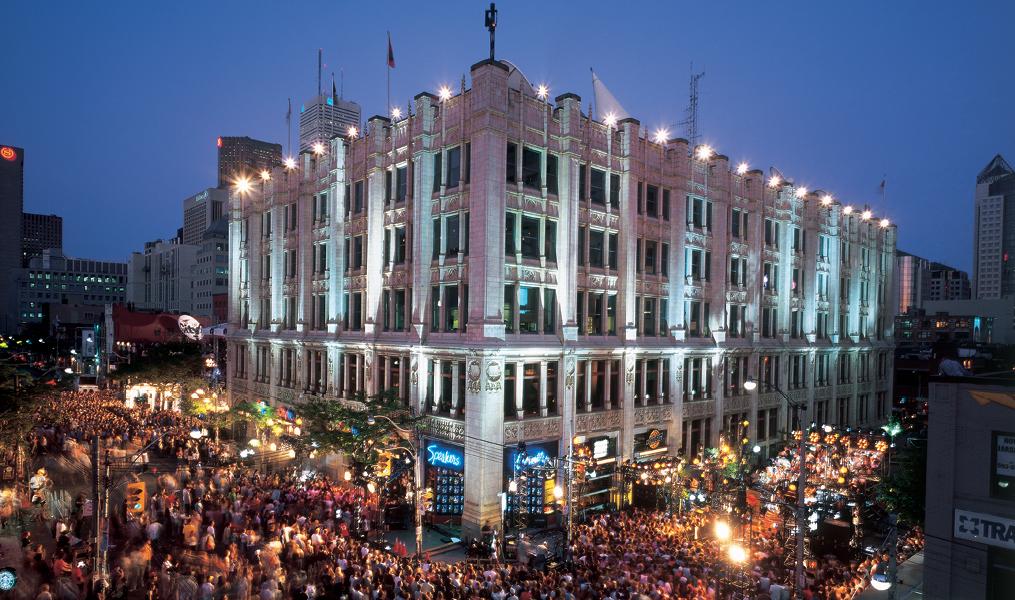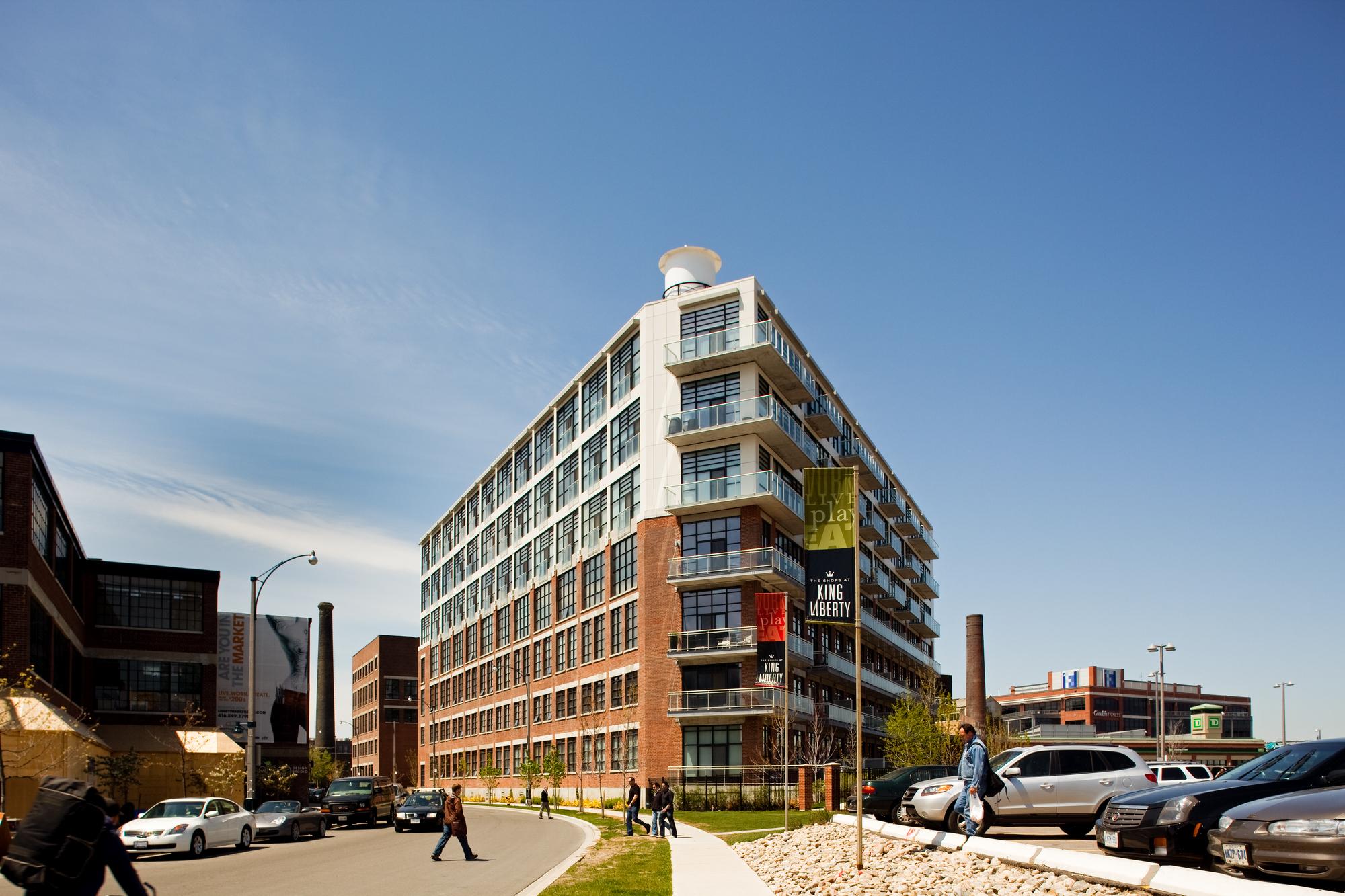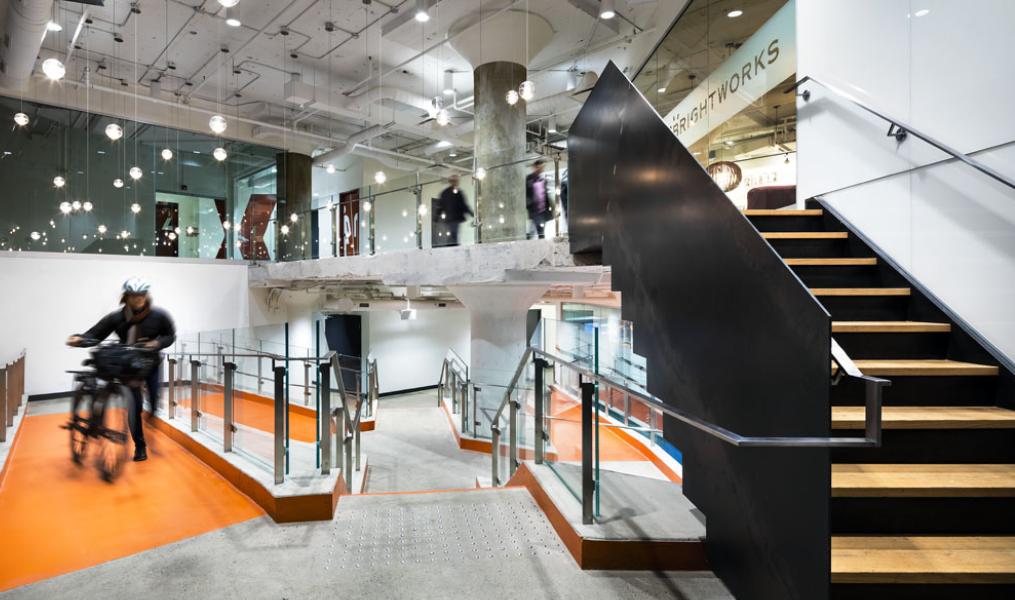Cities are always in a state of change and change require new ideas. Change will keep cities resilient and diverse in much the same way as any other healthy ecosystem. Old and new buildings mix happily in the context of density, walkability and access to transit, all contributing to make a great City. Old buildings play a special role, providing spaces to incubate innovative ideas or create space for first time buyers.

Jane Jacobs was witness to the conversion of 19th century brick and beam buildings, or what I call the first wave of adaptive reuse. These conversions provided new housing and business opportunities within the city.
299 Queen West was an opportunity to leverage an old building. Rather than demolishing the historic structure that once housed the Methodist Church of Canada and the Ryerson Press, the building was converted to house a new way of making television. The large glass sliding doors, turned the street into a concert hall and Speakers Corner invited people to have their say publicly in civic matters. The building became a multi-channel media hub, housing CHUM and CityTV, eventually becoming Bell Media over its 30+ year history.

The Toy Factory Lofts in Liberty Village saw a collection of derelict 19th century industrial buildings on an underused site become the anchor residential development for the emerging neighbourhood. Before that, the Candy Factory Lofts on Queen became the first loft conversion on Queen West, sparking a movement east and west to convert and create this new housing form.
This first wave of adaptive development lead to a fundamental change in Toronto’s downtown, infilling to create density and bringing wealth into the heart of the city. Interventions like 299 Queen West, the Toy and Candy Factories, leveraged the inherent value of old buildings and helped turn around neglected neighbourhoods in the city centre.
The second wave of adaptive reuse sees us in a very different context. Higher land values, aging populations, increased traffic and climate change are informing different decisions when it comes to adaptive reuse. We add more leasable/saleable area, expose more of the insides to natural light, add features to increase universal access, and find ways to accommodate the new modes of transportation in the city.
What has to remain, however, is a commitment to fostering affordable and attractive solutions that keep emerging and creative businesses and people within our markets. Housing new businesses in repurposed industrial containers or infilling between existing buildings, such as in the case of Market 707 or Toyko Smoke are ways the city is responding to maintaining those affordable spaces.

A recent project at 100 Broadview was originally imagined as a simple lobby intervention for a 1940s building used as a utilitarian storage facility. Our design that combined elements of architecture, accessibility and interior design created more than the sum of those parts. The result was a dynamic lobby of criss-crossing ramps and stairs – jigsaw of interconnecting choices for your path of travel. The building has become home to tenants within those crucial innovation markets and is the host to Toronto’s premier universal design gala RampUp! benefitting StopGap Canada. This project has an impact far beyond this modest intervention executed on a modest budget.
Ideas like 100 Broadview demonstrate that the second wave of adaptive reuse can push design and business ideas to a new level of innovation. To make the most of the high cost of real estate and our expanding knowledge concerning quality of life, climate change and community, we will need thinking that may be without precedent.
Quadrangle is fostering an understanding that the needs of our clients belong to this time and place. Jane Jacobs was right when she said that new ideas need old buildings, and we believe that these new ideas must be tailored to the context of their time. In the midst of this second wave of adaptive reuse, we look forward to seeing how our ideas will help our clients renew existing structures and places, creating thriving and interesting places to work, live and play.
Michelle Xuereb
Senior Associate